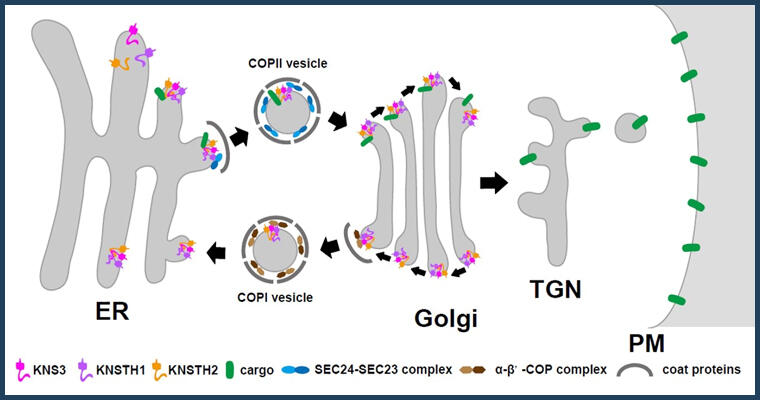A research group led by Professor Junpei Takano and Graduate Student Zhe Zhang of the Graduate School of Agriculture at Osaka Metropolitan University, and Associate Professor Sumie Ishiguro of the Graduate School of Bioagricultural Sciences at Nagoya University, has announced that they discovered Arabidopsis thaliana mutant lines in which boric acid channels were not properly transported to the plasma membrane, and identified the deficiency of the protein KAONASHI3 (KNS3) as a cause. They showed that this protein and two proteins with similar properties were likely to act as a cargo-receptor complex that helps the plasma membrane trafficking of boric acid channels. The findings are expected to contribute to improving crop yields. The results were published in the Journal of Experimental Botany, an international journal, on October 30.

Provided by Junpei Takano, Osaka Metropolitan University
Boron is an essential trace element for plants and extracellular boron is incorporated into cells through boric acid channels, which are transporters in the plasma membrane. Meanwhile, regulatory mechanisms for plasma membrane trafficking of boric acid channels are poorly understood.
In this study, the research group searched for the causative gene in Arabidopsis mutant lines in which boric acid channels are not properly transported to the plasma membrane. They found that these mutants had a deficiency of KNS3.
Next, they investigated the transport process of boric acid channels in detail. They found that the KNS3, KNSTH1, and KNSTH2 proteins, which have properties similar to KNS3, were likely to form a protein complex and help the trafficking of boric acid channels from the endoplasmic reticulum to the Golgi apparatus and then to the plasma membrane.
The surface of pollen grains of Arabidopsis usually has a reticulate pattern like the skin of muskmelon, but mutants with defective KNS3 gene function have been shown to lose this pattern. The aberrant pollen surface structure itself was considered to be attributable to the abnormal transport of a different protein than the borate channel. The KNS3-KNSTH1-KNSTH2 complex acts as a cargo receptor for boric acid channels and unknown proteins, possibly contributing to the regulation of boric acid uptake and the formation of pollen surface structures.
Takano said, "We are studying how transporters of nutrients in plants are placed where they should be in the cells. In this study, we newly discovered proteins responsible for the trafficking of transporters called boric acid channels from the endoplasmic reticulum, where they are synthesized, to the plasma membrane, where they work. We hope to accumulate basic research findings on nutrient transporters like these and contribute to increasing crop yields and reducing fertilizer use."
Journal Information
Publication: Journal of Experimental Botany
Title: Arabidopsis KNS3 and its two homologs mediate endoplasmic reticulum-to-plasma membrane traffic of boric acid channels
DOI: 10.1093/jxb/erae380
This article has been translated by JST with permission from The Science News Ltd. (https://sci-news.co.jp/). Unauthorized reproduction of the article and photographs is prohibited.




